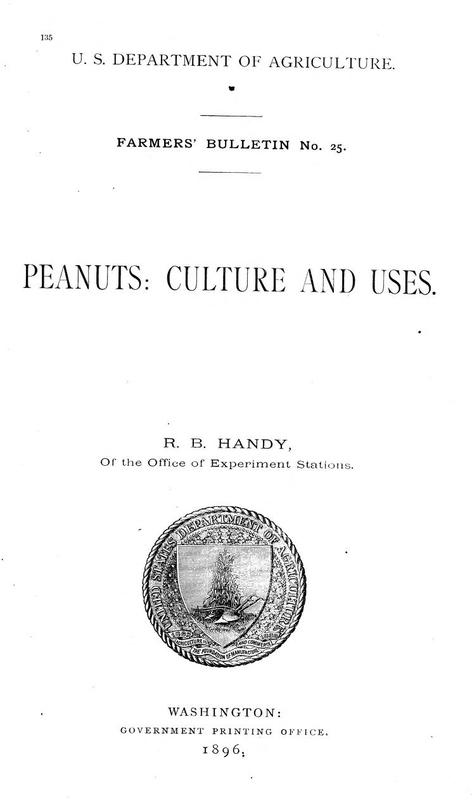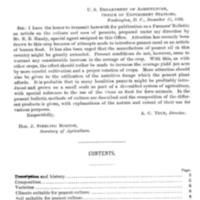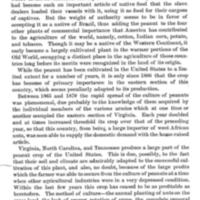Peanuts: Culture and Uses
Creator
Date
1895
Subject
Excerpt
The peanut (Arachis hypogwa), known also in different localities as the earthnut, groundnut, ground pea, goober, and pindar, is a trailing straggling annual, growing from 1 to 2 feet high, with thick, angular, pale-green, hairy stems, and spreading branches, and has the peculiar habit of maturing its fruit underground. (Strictly speaking it is not a nut at all, and should more properly be called the ground pea.) Its blossom is at the end of a long pedicel-like calyx tube, the ovary being at the base. After the fall of the flower the peduncle, or "spike," elongates and bends downward, pushing several inches into the ground where the ovary at its extremity begins to enlarge and develops into a pale yellowish, wrinkled, slightly curved pod, often contracted in the middle, containing from 1 to 8 seeds. Should the "spike" by accident not be enabled to thrust its point in the ground within a few hours after the fall of the flower it withers and dies. When fully grown the pods are from 1 to 2 inches long, of a dusky yellowish color, with a netted surface.
Title
Peanuts: Culture and Uses
File(s)
Peanuts Culture and Uses cover.jpg
(image/jpeg)
Peanuts Culture and Uses TOC.jpg
(image/jpeg)
Peanuts Culture and Uses 1.jpg
(image/jpeg)
Peanuts Culture and Uses 2.jpg
(image/jpeg)
 An official website of the United States government.
An official website of the United States government.





